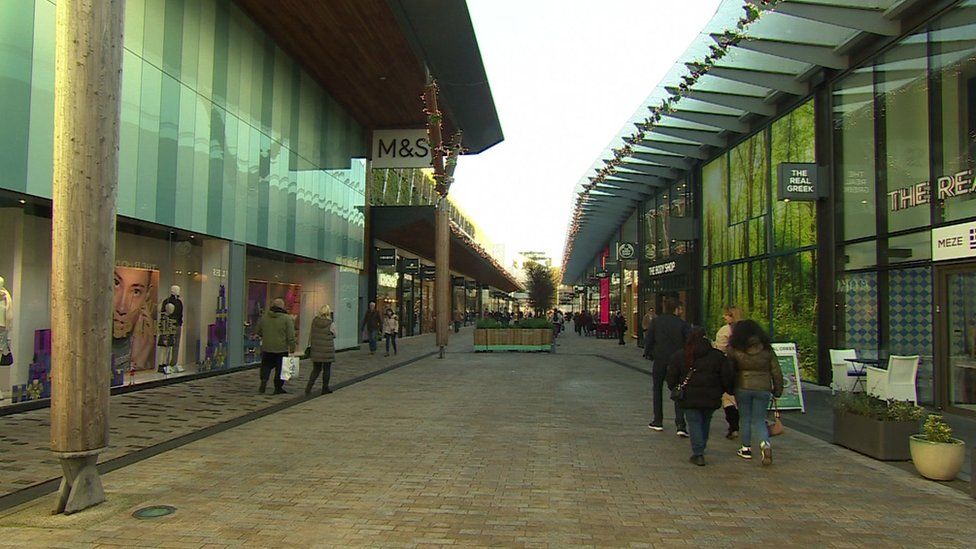Bracknell: The Berkshire town that was 'ahead of its time'
- Published

Fifteen-minute cities are increasingly part of the political discussion taking place across the country. However, the idea of a town having everything you need within walking distance of your home is not necessarily a new thing. Towns like Bracknell, which suddenly went through rapid, planned growth after World War Two, may prove that the latest idea in politics has been done before.
At the end of the war Bracknell was a small country village with a population of just 5,000.
More than 80,000 people now live in the Berkshire town, which is home to the headquarters of several household names including Waitrose and Honda.
It was one of 15 new towns built in the UK in late 1950s and early 1960s.
Thousands of people moved there from bombed out, run-down areas of London, lured by the promise of a job and free modern housing.
Residential areas were dotted with green spaces and parks where children could play.
Anne Shillcock was one of the earliest arrivals in Bracknell, moving there in the mid-1960s.
Widowed with two young children, she marvelled at the size of her new home, its indoor toilet and the park at the front where her children could play while she kept watch from her kitchen.
Lonely at first, Mrs Shillcock was one of a handful of mothers who lived on the first two roads created in the Priestwood area of the town.
Almost 60 years later she says: "It took a while to appreciate just how kind and friendly they were. It took time but we became a great community."
The days where you could build a whole new town, within striking distance of London, from scratch are long gone.
One way of building the hundreds of thousands of new homes needed in the south of England is to create smaller scale towns, which would run on the 15-minute city principle - where everything you need is just a 15-minute walk or bike ride away.
The concept has been controversial but Mary Temperton, leader of Labour-run Bracknell Forest Council, believes the planners who started building the new Bracknell in the 1960s were ahead of their time.
She explained: "It's like a 15-minute city. You lived here, you worked here. Bracknell encouraged people to work here - we had lots of industry, so you lived and worked in your area of the town."
However, Bracknell is very different to how it was even 20 years ago. The opening of the £250m Lexicon Shopping Centre in 2017 has transformed what had become a rather run-down town centre.
Prof Steve Musson, from the University of Reading's geography and environmental science department, admires the visionary ideas of the 1950s town planners and architects.
"New towns were built all over the south of England, lots of places which are quite vibrant now, so it was a real success, probably one of the main planning successes of British history," he says.
While Bracknell is not without its faults, if ever you wanted to know how to build heart and soul into a large-scale housing development then, perhaps, getting off at junction 10 the next time you drive along the M4 might be a wise move.
Follow BBC South on Facebook, X, or Instagram. Send your story ideas to south.newsonline@bbc.co.uk.
- Published3 October 2023
- Published16 November 2023
- Published21 April 2022